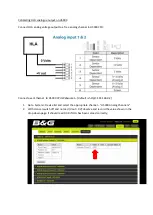
4
1. Introduction
Before use, operators must be provided with information, instruction and training for the use of the machine
and the substances for which it is to be used, including the safe method of removal and disposal of the
material collected. All persons who are working with or maintaining this machine must read the manual
carefully and understand it fully. In case you sell the unit, hand it on to the next owner.
Keep this manual always with the machine, to enable it to be referred to at any time.
Any other work not covered by this operating manual must not be carried out.
This machine is designed for industrial use by professionals. Only authorized and trained personnel may
operate this machine. This machine is not intended for use by persons (including children) with reduced
physical, sensory or mental capabilities, or lack of experience and knowledge.
Blastrac BV
offers a course on
the use of the machine in order to make the operating and maintenance personnel familiar with all elements of
the machine.
2. Machine description
The Blastrac dust collector 854-DCS may only be used in combination with Blastrac blast cleaning machines,
grinders and scarifying machines. The 854-DCS can
only
be used for
dry cleaning.
It should
only be
used for removing
noncombustible/non-explosive dust or substances
.
The 854-DCS must
not
be used for
pathogenic or carcinogenic or asbestos substances
without additional
safety measures.
Always mind the local safety requirements.
Contact your dealer for additional options.
Do not use the machine in the presence of dangerous atmospheres.
The machine is designed for usage in conditions according to classification
M
(see below).
Classification acc. standard EN 60335-2-69 – Annexe AA
Class
Designation
L
(light hazard) suitable for separating dust with a limit value of occupational
exposure of greater than 1 mg/m3;
M
(medium hazard) for separating dust with a limit
value of occupational exposure not less than 0,1 mg/m3
H
(high hazard) for separating all dusts with all limit
values of occupational exposure, including carcinogenic and pathogenic dusts.
In the case of dust harmful to health, contact the local health and safety authorities, and observe national
regulations in force both during use and disposal.
In addition to the Operating Instructions general and legal regulations regarding accident prevention and
environmental protection must be complied with and indicated!
Such duties may for example relate to the handling of hazardous substances or to the provision and wearing of
personal protection equipment as well as compliance with local regulations.
Dust emissions into the environment
Class
Value of performance
L
Retains at least 99 % of Most Penetrating Particle Size (MPPS) 0.3 μm
M
Retains at least 99,9 % of Most Penetrating Particle Size (MPPS) 0.3 μm
H
Retains at least 99,995 % of Most Penetrating Particle Size (MPPS) 0.3 μm





































